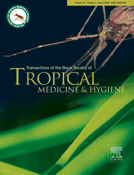-
Views
-
Cite
Cite
Somphou Sayasone, Youthanavane Vonghajack, Monely Vanmany, Oroth Rasphone, Smarn Tesana, Jürg Utzinger, Kongsap Akkhavong, Peter Odermatt, Diversity of human intestinal helminthiasis in Lao PDR, Transactions of The Royal Society of Tropical Medicine and Hygiene, Volume 103, Issue 3, March 2009, Pages 247–254, https://doi.org/10.1016/j.trstmh.2008.10.011
Close - Share Icon Share
Summary
Food-borne trematodiasis is an emerging public health problem, including in Lao PDR. We investigated the diversity of intestinal helminthes and polyparasitism in patients with hepatobiliary or intestinal symptoms in hospital and community-based surveys. Stool samples from 232 individuals aged ≥15 years were examined by the Kato-Katz method (three samples) and a formalin ethyl-acetate concentration technique (one sample). Opisthorchis viverrini and minute intestinal flukes (MIF) were common, with prevalences of 86.2% and 62.9%, respectively. Hookworm was the predominant soil-transmitted helminth (65.9%). The prevalences of Taenia spp., Strongyloides stercoralis and Trichuris trichiura were 22.8%, 10.3% and 8.6%, respectively. Additionally, 97 individuals were purged; O. viverrini and Haplorchis taichui were found in 95 and 76 participants, respectively. Other trematodes included Phaneropsolus bonnei (22.7%), Prosthodendrium molenkampi (14.4%), Haplorchis pumilio (5.2%), Haplorchis yokogawai (3.1%) and Echinochasmus japonicus (3.1%). Co-infection with O. viverrini and MIFs was rampant (81.4%). Polytrematode infection is highly prevalent in Lao PDR and hence requires urgent attention.






Comments